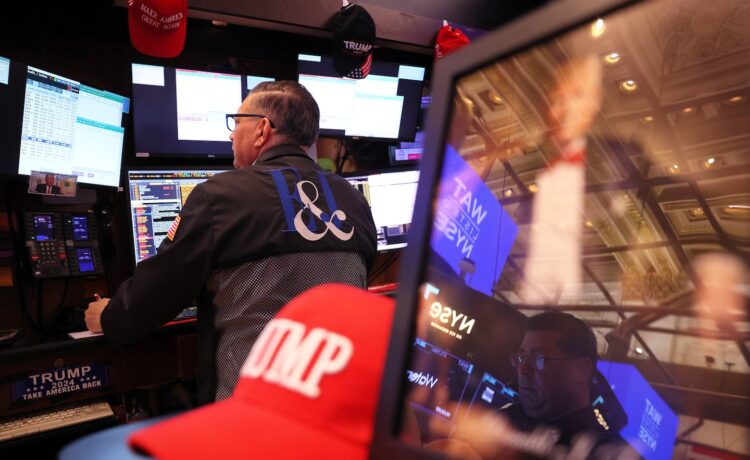The latest: The top rates on online bank accounts, money market mutual funds, and short-term Treasuries have slipped from last fall’s peak above 5 percent.
But thanks to a cautious Federal Reserve and a murky economic outlook, they’re still hanging in at 4 to 4.5 percent, much better than the pitiful yields that prevailed for years before inflation forced the Federal Reserve to jack up borrowing costs in 2022.
After slicing rates by a full point last year, the Fed has hit pause. Fed chair Jerome Powell said last week that policy makers will take more time to gauge inflation trends — and the impact of President Trump’s economic agenda — before making any moves.
Why it matters: Short-term yields are likely to stay elevated until the Fed acts. That’s offering savers a chance to book decent returns with little risk.
“Rates have come down, but they are still attractive,” said Ted Rossman, a senior industry analyst at Bankrate, a financial data firm. “You’re getting a solid return for minimal effort.”
The numbers: According to Bankrate, the highest-yielding online savings account is currently Peak Bank at 4.54 percent.
Want a certificate of deposit? A 1-year CD from Bask Bank is paying 4.4 percent. KS StateBank is offering 4.25 percent on a 2-year term.
No, these aren’t household names. But the accounts are insured by the Federal Deposit Insurance Corp. up to $250,000.
Yields on money market mutual funds are a little lower — but withdrawals are quick and easy. The average 7-day yield among the 100 largest funds is 4.13 percent, according to Crane Data. The top performer? Morgan Stanley’s $3.7 billion Money Market Portfolio at 4.41 percent.
“If the Fed does cut once or twice this year as expected, yields will move down again,” said Peter Crane, CEO of the Westborough firm. “But nobody’s expecting it to drop below 3 percent.”
Money market funds aren’t insured, but losses have been exceedingly rare.
Treasuries are the gold standard of safety. Yields on 1-year bills are about 4.1 percent — the same as six months ago — while 2-year notes have ticked up to 4 percent.
The fine print: While you can yank money from a savings account or money fund at any time, their yields move with the market. My Marcus account (Goldman Sachs’ retail arm) has dropped five times since last April — from 4.5 percent to 3.75 percent this week.
CDs offer rate certainty but early withdrawals usually come with a penalty. I locked in a 1-year CD at 5 percent, also with Marcus. Today, the best it’s offering is 4.5 percent — and only if you’re willing to tie up your funds for 14 months.
The big picture: Cash, of course, is a small plank in an investment portfolio.
- It’s a tool to earn some interest and ride out stock market swings.
- Over the long term, a diversified strategy built around stocks will outperform interest-earning accounts.
But lately, the mood has soured on concerns that Trump’s new tariffs and government cutbacks will spur inflation and rein in the economy.
The S&P 500 fell 1.1 percent Wednesday, dragged down by the former tech juggernauts known as the Magnificent Seven. The index, which swung between small gains and losses Thursday, is down 9 percent since hitting a record high in February.
Still, stick with your plan, said Raj Sharma, managing director and private wealth adviser at Merrill Private Wealth Management in Boston. “Equities over the long term always do well.” He points to dividend-paying stocks and international equities as areas of relative value.
On the bond side, Sharma recommends a laddered strategy — spreading maturities across short and long timeframes to manage risk and lock in decent yields. His current sweet spot: tax-exempt municipal bonds maturing in four to five years.
Final thought: Trump dropped another bomb Wednesday with the announcement of 25 percent tariffs on all automotive imports.
The move is sure to further rattle the markets.
“Hold tight, be steady, and rebalance where appropriate to areas that haven’t been overvalued,” Sharma said.
It’s not sexy, but 4.5 percent is nothing to scoff at — especially these days.
Larry Edelman can be reached at larry.edelman@globe.com.

















